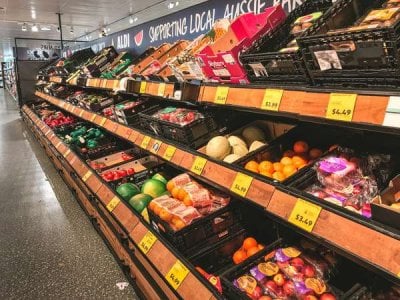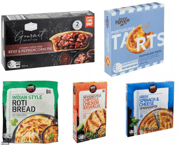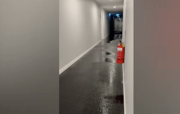Are you overspending every time you shop? The surprising reason experts say you should avoid these items in supermarkets
- Replies 0
Let’s be honest—most of us have our supermarket routines down to a fine art.
We know which aisles to hit first, where the best specials are, and how to dodge the crowds (well, most of the time).
But what if we told you that, despite all your years of shopping experience, you might be falling for one of the oldest supermarket tricks in the book—without even realising it?
That’s right, folks. According to consumer experts, the way you shop could be costing you more than you think, and it all comes down to where you’re looking on the shelves.
You might have heard the saying 'eye level is buy level'—and there’s a good reason for it. Supermarkets are masters of psychology, and they know exactly how to tempt us into spending more.

The most expensive and profitable products are almost always placed right at eye level, making them the first thing you see and, more often than not, the first thing you grab.
Consumer group Which? recently revealed that if you want to save money, you should avoid the products staring you in the face and instead look a little higher or lower.
For example, in the tea aisle, you’ll often find big-name brands like PG Tips taking up prime real estate on the middle shelves, while the supermarket’s own, much cheaper, tea bags are tucked away on the bottom shelf. In a blind taste test, some of these budget options even outperformed the pricier brands!
So next time you’re reaching for your favourite cuppa, try bending down or stretching up—you might just find a better deal.
Source: @savebeat / Youtube Shorts.
This isn’t just a happy accident. Supermarkets use something called a 'planogram'—a carefully designed map that dictates exactly where every product should go to maximise sales.
Professor Graham Kendall, an expert in operations research, explains that these diagrams are all about getting you to spend more. The products that make the store the most money are placed where you’re most likely to see (and buy) them.
It’s not just about what’s at eye level, either. The start of each aisle is often filled with less popular items, because research shows shoppers need a moment to adjust before they start making decisions. Essentials like milk and eggs are placed as far apart as possible, forcing you to walk past tempting displays and 'specials' along the way.
The tricks don’t stop at shelf placement. Supermarkets are full of clever strategies designed to part you from your hard-earned cash:
And next time you’re in the supermarket, take a moment to look up and down the shelves. Compare prices, check the unit cost, and don’t be afraid to try the supermarket’s own brands. You might be surprised at the quality—and the savings.
Read more: Home brand groceries cost less—what Aussie shoppers give up

Have you noticed these supermarket tricks before? Do you have any tips for saving money at the shops? Maybe you’ve found a hidden gem on the bottom shelf that you swear by! We’d love to hear your stories and advice—share your thoughts in the comments below!
We know which aisles to hit first, where the best specials are, and how to dodge the crowds (well, most of the time).
But what if we told you that, despite all your years of shopping experience, you might be falling for one of the oldest supermarket tricks in the book—without even realising it?
That’s right, folks. According to consumer experts, the way you shop could be costing you more than you think, and it all comes down to where you’re looking on the shelves.
You might have heard the saying 'eye level is buy level'—and there’s a good reason for it. Supermarkets are masters of psychology, and they know exactly how to tempt us into spending more.

Supermarkets often place the most expensive brands at eye-level to encourage impulse buying, so shoppers can find cheaper options by looking at higher or lower shelves. Image source: Marques Thomas / Unsplash. Disclaimer: This is a stock image used for illustrative purposes only and does not depict the actual person, item, or event described.
The most expensive and profitable products are almost always placed right at eye level, making them the first thing you see and, more often than not, the first thing you grab.
Consumer group Which? recently revealed that if you want to save money, you should avoid the products staring you in the face and instead look a little higher or lower.
For example, in the tea aisle, you’ll often find big-name brands like PG Tips taking up prime real estate on the middle shelves, while the supermarket’s own, much cheaper, tea bags are tucked away on the bottom shelf. In a blind taste test, some of these budget options even outperformed the pricier brands!
So next time you’re reaching for your favourite cuppa, try bending down or stretching up—you might just find a better deal.
Source: @savebeat / Youtube Shorts.
This isn’t just a happy accident. Supermarkets use something called a 'planogram'—a carefully designed map that dictates exactly where every product should go to maximise sales.
Professor Graham Kendall, an expert in operations research, explains that these diagrams are all about getting you to spend more. The products that make the store the most money are placed where you’re most likely to see (and buy) them.
It’s not just about what’s at eye level, either. The start of each aisle is often filled with less popular items, because research shows shoppers need a moment to adjust before they start making decisions. Essentials like milk and eggs are placed as far apart as possible, forcing you to walk past tempting displays and 'specials' along the way.
The tricks don’t stop at shelf placement. Supermarkets are full of clever strategies designed to part you from your hard-earned cash:
- End-of-aisle displays: These are prime spots for 'specials' that aren’t always as good a deal as they seem.
- Brightly coloured signs and seasonal offers: Designed to catch your eye and encourage impulse buys.
- Scattering essentials: By placing must-have items at opposite ends of the store, you’re forced to walk past more products, increasing the chance you’ll pick up something extra.
And next time you’re in the supermarket, take a moment to look up and down the shelves. Compare prices, check the unit cost, and don’t be afraid to try the supermarket’s own brands. You might be surprised at the quality—and the savings.
Read more: Home brand groceries cost less—what Aussie shoppers give up
Key Takeaways
- Supermarkets often place the most expensive brands at eye-level to encourage impulse buying, so shoppers can find cheaper options by looking at higher or lower shelves.
- The strategic arrangement of products on shelves, known as a 'planogram', is used by supermarkets to maximise sales and influence what customers purchase.
- Essential items like milk and eggs are often placed at opposite ends of the store to make shoppers walk past more products, increasing the chance of extra purchases.
- To avoid overspending and falling for sneaky sales tactics, it’s best to write a shopping list and stick to it while shopping.
Have you noticed these supermarket tricks before? Do you have any tips for saving money at the shops? Maybe you’ve found a hidden gem on the bottom shelf that you swear by! We’d love to hear your stories and advice—share your thoughts in the comments below!







